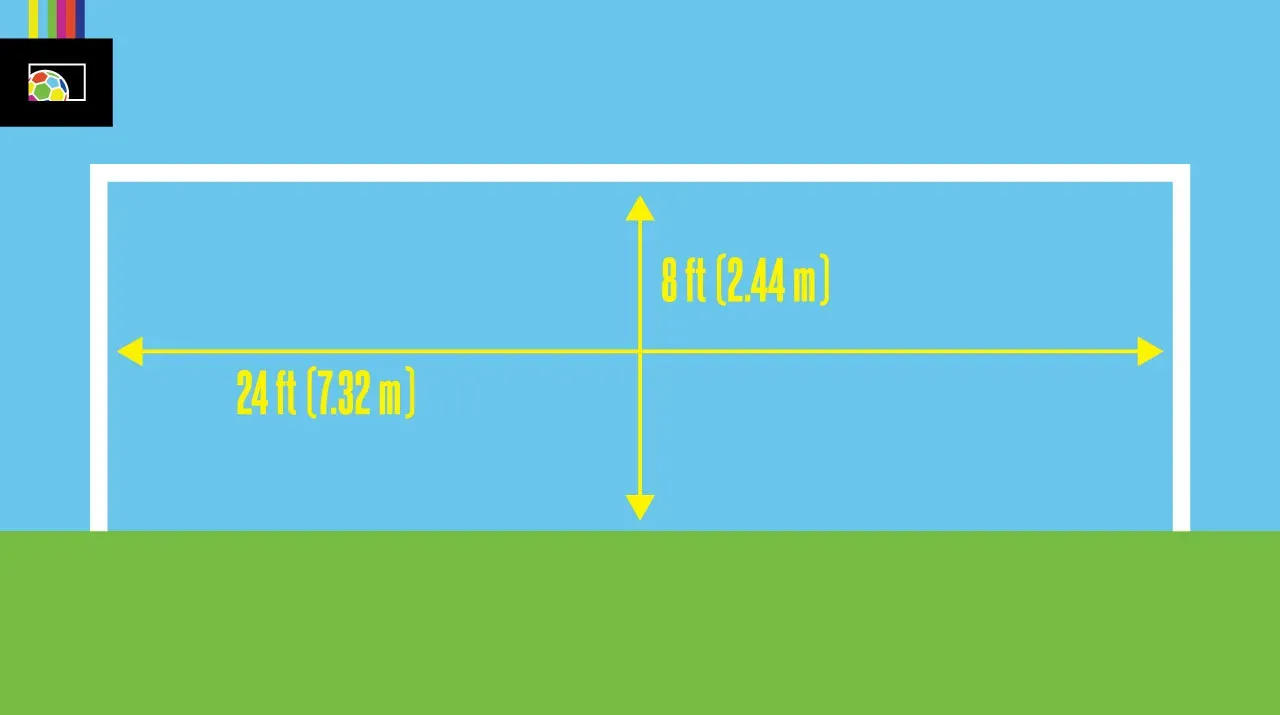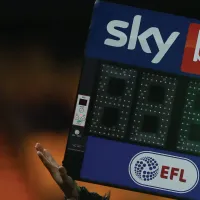Soccer is a relatively simple sport in terms of equipment. All you really need to play is a flat(ish) surface, a ball, and goals of some sort. In informal games, the goals could be markings on a wall, trash bins, a couple of boots, or almost anything at all to mark the scoring area. But in official games, the dimensions of a soccer goal are strictly regulated.
Soccer Goal Dimensions
As far as FIFA is concerned, the regulation size for an adult soccer goal is as follows:
The inner edges of the goal posts must be 8 yards (24 feet / 7.32 meters) apart, while the lower edge of the crossbar must be 8 feet (2.44 meters) off the ground. Goalposts and the crossbar cannot exceed 5 inches (12 centimeters) in width or depth, but these dimesions to not have the be the same. Should one side of the posts/crossbar be longer, the longer side must be perpendicular to the goal line. Most modern high-level goalposts are round in shape.
Posts must be white and made of wood, metal, or other approved materials. Many high-level professional goals today are made from advanced composite materials (though still sometimes coloquially referred to as “the woodwork”).
These regulations are the same for both men’s and women’s senior level games. Youth competitions often use smaller sized or even portable goals depending on the level.

Interestingly, it is not techincally necessary to have a net installed on goals. The laws of the game do not require it, only that any nets must not interfere with the goalkeeper. But it is unheard of in today’s organized game to see a field without nets installed.
History of the soccer goal
The first soccer goals did not have a crossbar, nor nets. This style of goal survives today in Australian rules football. But for soccer, disputes over whether or not a goal was actually scored led to adjustments in the 19th century.
The “Sheffield Rules” introduced the solid crossbar in the 1860s. Nets came later, in the 1890s. Similar to nets in basketball, goal nets help to confirm when a goal has actually been scored, and also prevent players from having to chase the ball around.
By the turn of the 20th century, the dimensions of the goal (and other rules) became standardized across the United Kingdom and these spread rapidly throughout the world of association football. Other than updates from wood to metal, net mounting systems and so on, goals have largely remained the same since.
Different styles of soccer goals
Sometimes you’ll see variations of goals in non-professional settings.
Commonly in the United States at schools and public parks, you will find “H” shaped goals. These feature a soccer goal with a net at the bottom, with uprights extending above that is used for American gridiron football. These are similar in appearance to the goals used in the traditional Irish sports of hurling and Gaelic football. Rugby uses H-shaped goals as well, however no nets are used and only the upper, above-the-crossbar portion counts for goals. This style of goal was once also used for professional American and Canadian football, but since the 1970s these were phased out in favor of a single support post, “Y” shaped configuration.
Another dual-sport variation that is becoming popular is a soccer goal builit-in to the structure of a basketball hoop, allowing the court to be used for small-sided street games.
A wide varierty of portable goals are used for youth games and pickup soccer. These can be smaller, semi-permenant goals on wheels kept in a single location, or compact travel goals designed to be moved from location to location.
Photo: Imago















